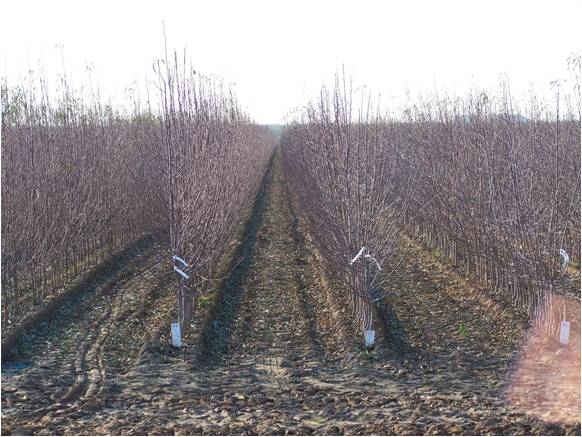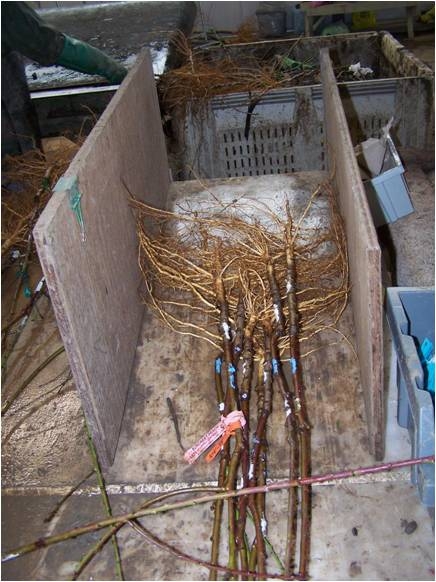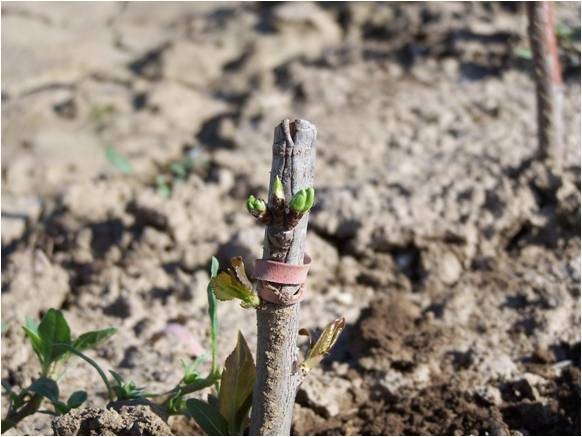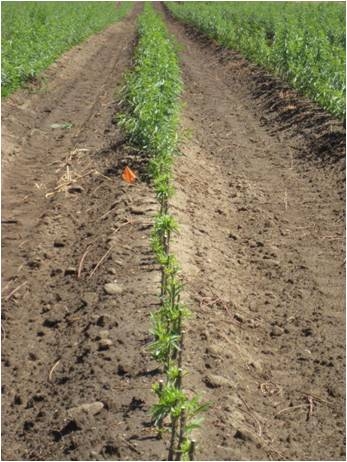Dec 22, 2011
One of my major areas of research the past few years has been related to alternatives to methyl bromide fumigation in perennial crop nurseries. A list of recent posts on soil fumigation research and issues is available. Some specific research areas have included reducing atmospheric emissions of methyl bromide alternatives and on alternative fumigants such as methyl iodide.

Today, I thought I'd share some basic information on the nursery cropping system as well as two recent research reports on our work. The perennial crop nursery system is a fairly unique cropping system where many of our orchard trees, backyard trees, grapevines, and garden roses are grown in the ground for a year or two and then dug up and sold as "bare root" plants. Most of these trees and vines are grown as scions budded onto a rootstock so that the resulting plants have good market characteristics of the harvested commodity as well as a root system that is vigorous and well adapted to the soil and environment in the production orchard or vineyard.

Nursery stock is sometimes referred to as "plants for planting" in the regulatory world. Because of very high requirements (and expectations) for planting stock free of plant parasitic nematodes and disease pathoges, most perennial crop nurseries in the state are fumigated with a preplant soil fumigant such as methyl bromide or 1,3-dichloropropene before each planting cycle (usually about once every 4 years in the crop rotation). One of the preferred fumigants for this purpose, methyl bromide, is being phased out due to its impact on stratospheric ozone. More details on this issue and on the phase out can be found at http://www.epa.gov/ozone/mbr/

In response to the phaseout of methyl bromide, a lot of research has been conducted trying to find alternative strategies and approaches that are environmentally acceptable, economically viable, and provide similar levels of broad spectrum pest control - this is a pretty tall order! For the past several years, I have been involved in a series of projects to test and demonstrate alternative fumigants that meet nematode certification requirements as part of the USDA-ARS Pacific Areawide Program for Integrated Methyl Bromide Alternatives.
Recently, we attended the Annual International Research Conference on Methyl Bromide Alternatives and Emissions Reductions. A lot of great information from researchers around the world is availabe at the conference website (MBAO.org). This year in San Diego, I gave an update on the Nursery Sector Project of the Pacific Areawide Program and Joy Abit presented a poster on recent herbicide testing we've done in tree nurseries. Our proceedings papers as well as the presentations are available online for those that are interested:
MB Alternatives for the California Perenial Nursery Industry - a PAW Project Update (Proceedings) (Presentation)
Weed Control Efficacy and Rootstock Safety to Herbicides in Fruit and Nut Tree Nursery Production (Proceedings) (Poster)

Happy Holidays!
Brad